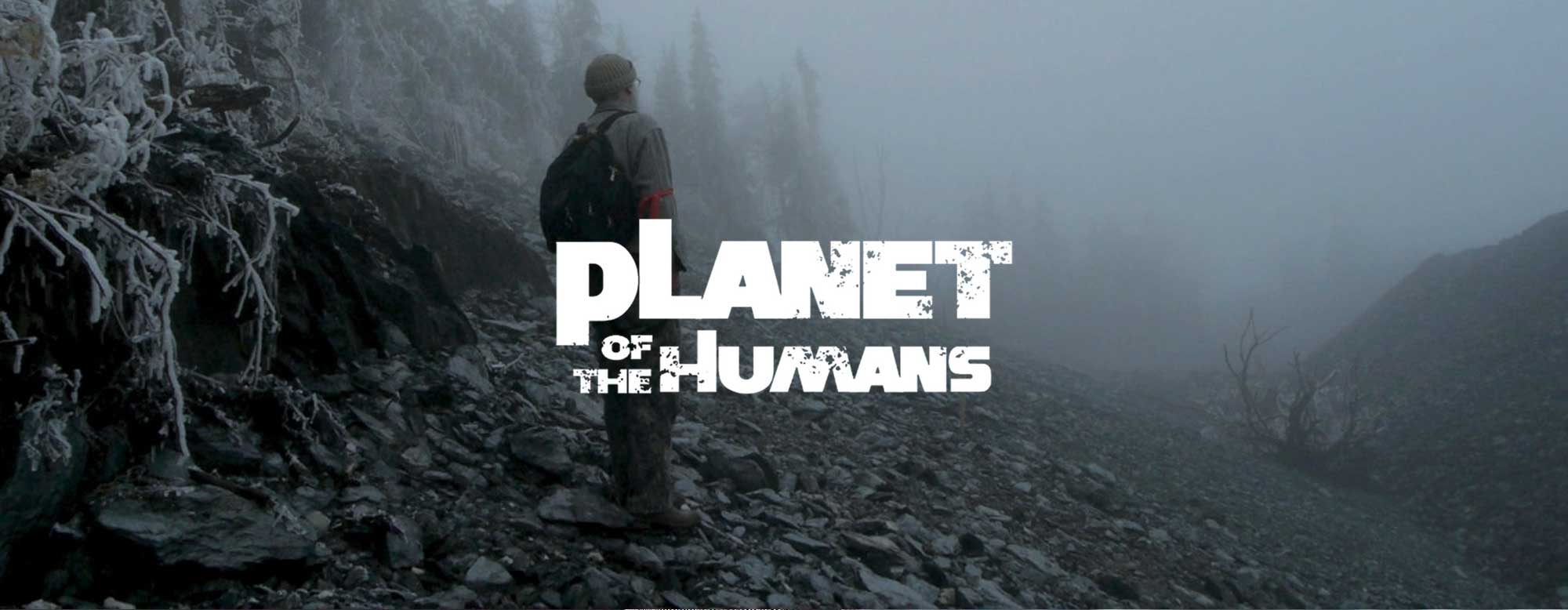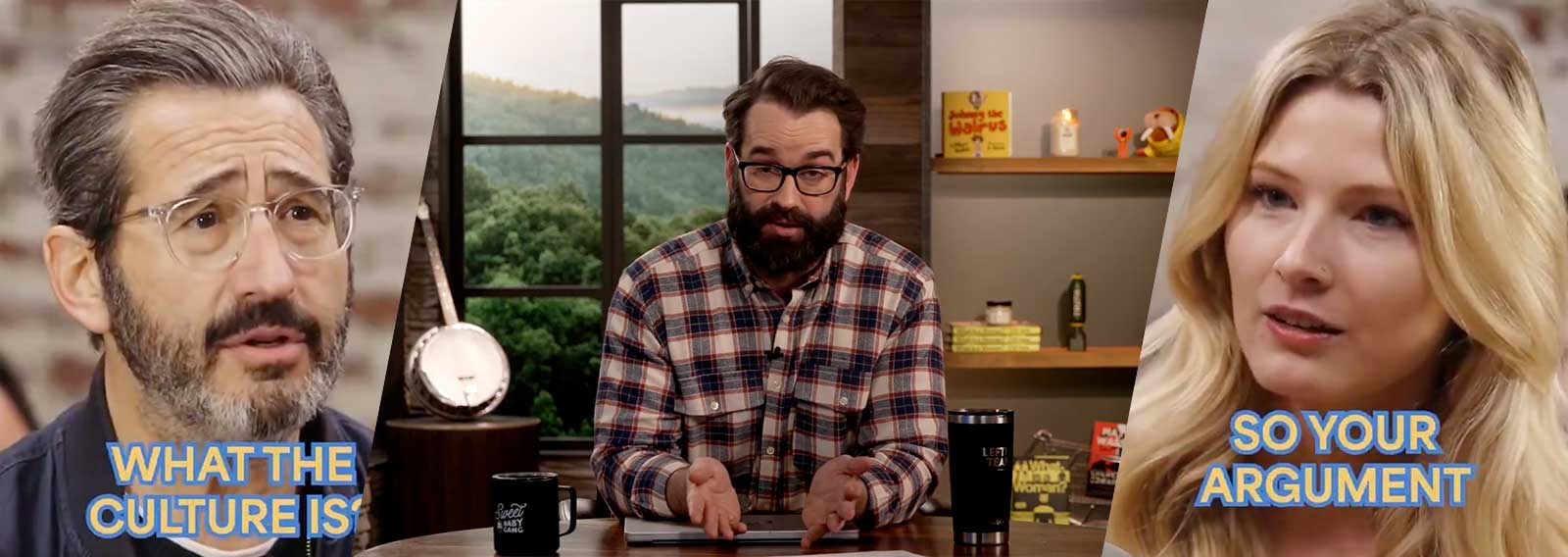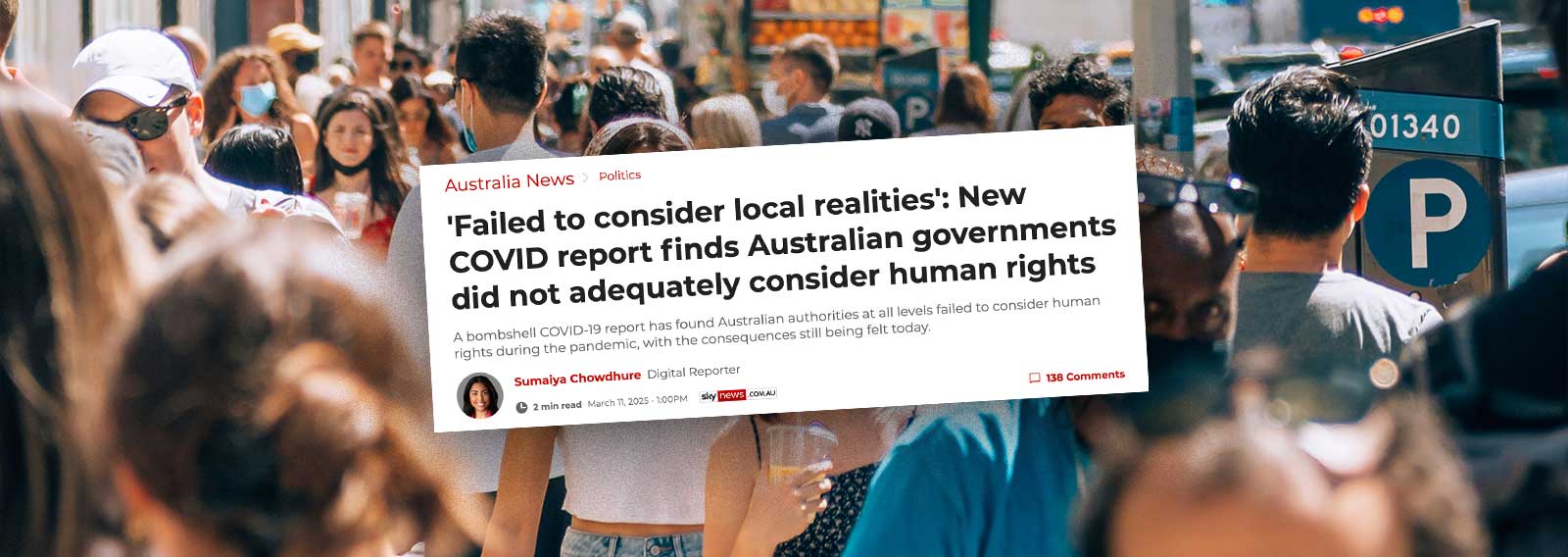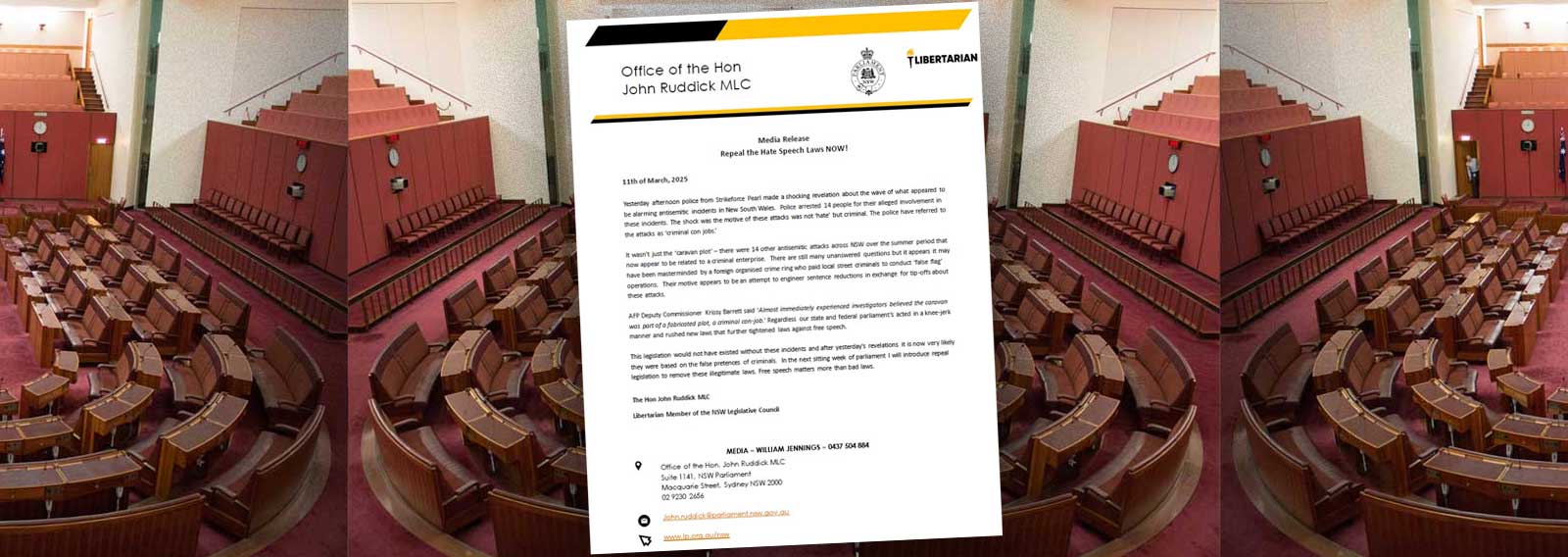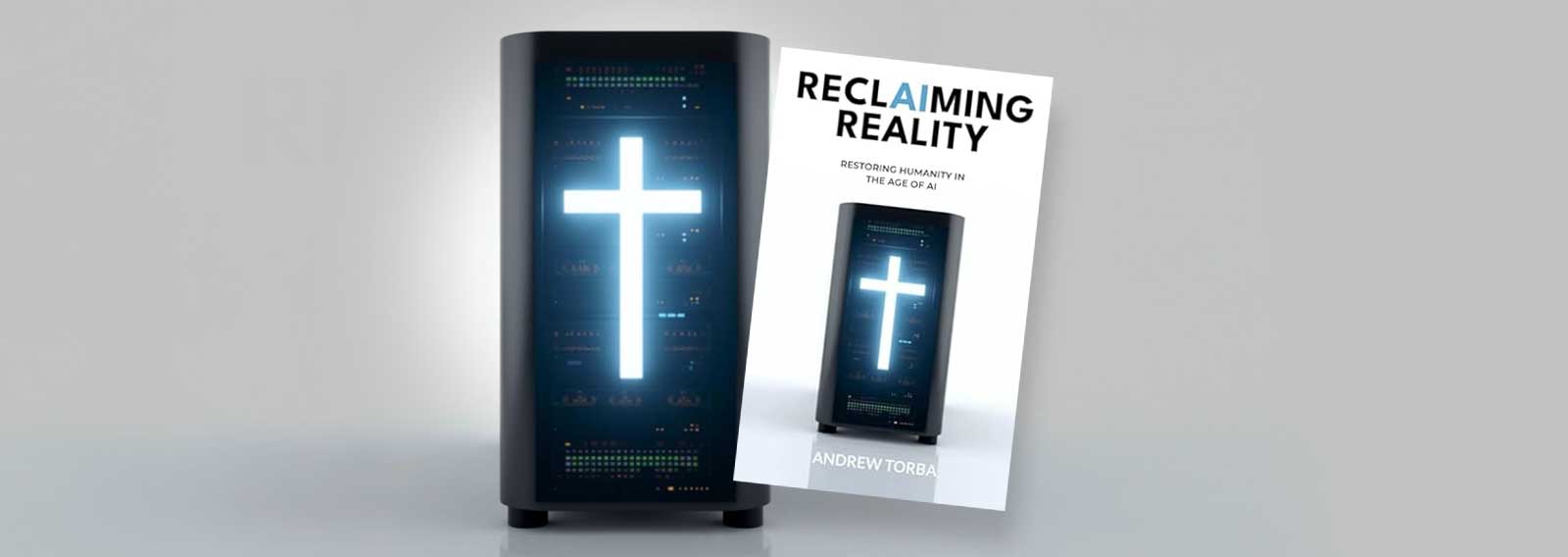Michael Moore’s, The Planet of the Humans is currently one of the top trending videos on YouTube. Just in time for the Wuhan Virus lockdown, Moore has released his latest documentary for free! And in less than a week it is quickly closing in on a massive, two-million views.
The great battle over global warming has always been identified as the authority of science. But now, Moore’s documentary reveals that the science is secondary to the question of religion. And as such, this is probably Moore’s most valuable work to date.
Planet of the Humans makes for at times excruciating viewing—especially if you believe in ‘green energy’—much like the ‘cringe humour’ on The Office (UK), or season one of The Office (US). Here are just some of the many highlights with time references to aid ease of viewing:
- 6:58 While filming at a music festival in “the green mountain state of Vermont powered by 100% solar energy” a little rain starts to fall and the organisers are quickly forced to turn on their bio-diesel generator. And then when that wasn’t enough, they have to plug into the electrical grid. Jeff Gibbs, the director of The Planet of the Humans wryly concludes, “That, was disappointing. But after all, it had been raining. Maybe next time things would go better…”
- 9:57 Richard Branson promising to donate $3 billion dollars in future profits to fight global warming. (I’m sure the staff at Virgin Australia wishes he had hung on to a bit of that as they face imminent insolvency) But when Branson is asked, “Is Al Gore a prophet?” Branson hesitates and says half-jokingly, “How do you spell ‘profit’?”
- 12:45 At the launch of a new electric car, the Chevy ‘Volt’, Gibbs asks the spokeswoman for General Motors what’s actually charging the car. Unsure, he’s directed to the representative from the Lansing Board of Water and Light (LBWL) where he’s told that their electrical grid operates on 95% coal. He also goes on to say, “To suggest that all of the power used for these cars will be generated from wind and solar in the very near future would not be correct…In fact, we’re talking about charging these up at night so there won’t be any solar at that time. And so, we’re down to wind, and very often at night the wind does fall off so…”
- 14:35 Gibbs is then told that LBWL has the state of Michigan’s largest solar array just down the road, and so he is invited to check it out. In one of those segments where the representative will rue the day he was ever so honest, Gibbs is told that the panels only have an 8% efficiency! When asked how many homes this array—the size of a football field—provide electricity for, Gibbs is told: “The standard answer that we tell everybody is that we’re providing the peak requirement for fifty homes. However, for most of the people who look at it a little closer…it’s just a little over ten homes over a year.”
- 17:15 Next they turn their attention to wind farms. And Gibbs wisely asks, “They were impressive machines. But is it possible for machines made from industrial civilisation to save us from industrial civilisation?” Especially when he learns that the wind turbines need to have a fossil fuel power plant to back them up so that it’s consistently running at the same baseload power. Otherwise, he’s told, you’ll just generate an even bigger carbon footprint to bring it back up to speed.
- 21:15 Then Moore’s team investigates a zoo which was ‘supposed’ to be powered by elephant manure. But it turns out that they didn’t produce enough to even heat the elephant barn. O, dear. You really can’t make this stuff up!
- 21:40 Even more alarmingly, he visits an ethanol plant where he’s informed that even they are reliant upon huge quantities of fossil fuels to remain operational. Gibbs quips, “Great. So, ethanol was reliant upon two things. A giant fossil-fuel-based industrial agricultural system to produce corn. And even more fossil fuels in the form of coal. All of this in the attempt to replace fossil fuels. It was enough to make my head explode.”
- 22:50 In interviewing Richard York, an environmental sociologist from the University of Oregon, he told that “Nations which add non-fossil fuel energy sources do not seem to see a particular suppression of fossil-fuel use.” That means that green energy is not even coming close to replacing fossil fuels.
- 24:40 But for environmentalists, it gets even worse. Gibb’s is told that solar panels are not made out of sand—as is commonly thought—but out of a combination of high-quality quartz and coal. Further, some solar panels only last for about ten years before they need to be replaced.
- 26:10 What’s more, as coal plants are shut down, they are being commonly replaced with natural gas facilities which is obviously self-defeating because that is also a fossil fuel. So, when some people talk about “Clean Energy” they’re referring to solar and wind, whereas when major donors such as former New York mayor, Michael Blomberg talk about clean energy he’s also referring to natural gas. Ironically, this has led to one of the largest expansions in the use of fossil fuels through the reliance on natural gas.
- 29:40 When talking to industry insiders Gibbs is informed that they “Need be able to back up power to keep the system steady all the time so it doesn’t collapse. Most likely that’s through fast-acting gas plants, but also what we call the caseload plants, either nuclear or coal that are on all the time but that maybe can be dialled down during the day and dialled up when demand starts rising.” But that is a huge problem because of the further energy that is lost during that process.
- 34:09 Elon Musk gets a well-deserved shellacking for promising to run his Tesla Gigafactory completely on a combination of thermal wind and solar, producing all the energy that it needs. But the reality is, it has lines connecting it up to the same electrical grid that we’re all connected to. Apple also claims to be based on 100% renewable energy. However, they too are still firmly connected to the electrical grid.
- 54:00 Gibbs finds out that biomass facilities are really just burning enormous amounts of wood, as well as natural gas. What’s more, because machinery and trucks are needed to cut down trees and transport them to the power plant, the whole process couldn’t function without the use of fossil fuels. Not only that, but a single biomass plant emits over four-hundred-thousand tons of carbon dioxide into the atmosphere each year.
- 56:45 One particular biomass plant uses tire-derived fuel to raise the temperature of the fire, because anybody who’s tried to burn green wood or wet wood, knows that it doesn’t burn very well. And so, Gibbs rightly poses the question, “We’re to do our part by getting out of bed with coal companies and into bed with logging companies?”
- 1:03:50 Even Germany, which is held up as the model as to what can be achieved in using renewables, uses biomass as the greatest proportion—approximately sixty-percent—of its renewable energy needs as the above graph shows.
- 1:07:00 Then comes the most climatic ‘cringe’ moment of all…Gibbs addresses the director of the Sierra Club of Pennsylvania and she is immediately and embarrassingly out of her depth, being forced into obfuscating around the question of the use of biomass materials by offering the excuse that their position is “nuanced” and she’s not prepared to give a definitive answer. About one-minute later, Robert F. Kennedy Jnr and Bill McKibben both do exactly the same thing.
- 1:15:30 Gibbs asks, “So when you divest from fossil fuels, and invest in Green Funds what are you investing in?” Gibbs takes a deep dive into Securities and Exchange Commission filings to find out. And what he finds is that, for instance, in the Green Century Funds less than 1% is being invested into solar and wind, compared with 99% invested into mining…oil and gas infrastructure companies…biofuels…logging and paper companies…and banks, lots of banks.
- 1:17:28 Gibbs says, “And in perhaps the most bizarre twist of all, the Sierra Club’s green fund’s biggest holding is in Viva, the world’s largest consumer of forests, to be incinerated in green energy biomass plants.”
- 1:26:00 The infamous Al Gore—of An Inconvenient Truth—is shown being confronted on numerous occasions as to whether there might be just a little hypocrisy in him selling his communications business to Al Jazerra – one of the largest companies on earth back by fossil fuel monies. Nope, nothing to see there, he says. It’s all “sustainable”.
- Finally, at 1:27:00 they come back to another music festival. This time is the environmental holy festival of ‘Earth Day’ And its founder, Denis Hayes, says that the entire event is running on solar energy. But when Gibbs once again goes backstage, to see what is really going on, he’s told, “It ain’t running this whole thing on that, Jack. I can tell you that.” Gibbs quickly learns that it is again being powered by supplementary power sources.
If you’re an environmentalist of any shade of green, it makes for heart-wrenching viewing. But Gibbs has the courage to truly self-reflect and ask, “Why, for most of my life, have I fallen for the illusion green energy would save us?” To find an answer, at the forty-nine-minute mark, Gibbs speaks with Sheldon Solomon, a social psychologist at Skidmore College. Where he asks:
I’ll just be honest with you about my dilemma…The right has religion and they have a belief in infinite fossil fuels. Our side says, “It’s going to be OK, we’re going to have solar panels, we’re going to have wind towers. As soon as I heard you talk about our denial of death I’m like, “Could that, be it?” Could it be that we cannot face our own mortality? Could we have a religion that we’re unaware of?”
The response from the social psychologist is as concise as it is affirming:
Absolutely! I think you’ve hit the proverbial nail on the head.
This is the most profound insight in the whole movie. It’s that environmentalists have turned their philosophy into a man-made god or idol. And because of that, it must be worshipped with unquestioning devotion.
It was Nietzsche who posed the question in his book, Thus Spake Zarathustra, that if there are gods, how could man bear not to be a god on earth? This led to his infamous battle cry, “Nothing but earth!” and to his further summons to, “Remain faithful, I adjure you, my brothers, to the earth. Do not thrust your heads into the sands of heavenly things…To sin against the earth, that is now the most monstrous crime of all.”
Nietzsche’s militantly atheistic philosophy not only paved the way for German Nazism, but also explains the irrational and dogmatic religious fervour of those who believe in the catastrophic climate emergency. In short, in their rejection of God, they need the coming ecological apocalypse to be true. Because this is what gives their lives purpose and meaning. They have to preach a gospel of saving the planet because there is no transcendent being who will save them.
And as such, their humanist version of the Christian great commission (See Matthew 28:16-20) is ironically anti-human. For only the solution that Gibbs offer is a dramatic de-population of the earth. The sacrifice of potential children so that Gai—Mother Earth—might be appeased and shower down her prosperity.
Which explains why The World Health Organisation is so keen on aggressively pursuing abortion, contraception and population control. But also, throw in a bit of COVID-19 and euthanasia and this might well be a possibility!
All of which means that while The Planet of the Humans offers a powerful critique of the problem, it ultimately offers no hope. Significantly, this is something that even the left-leaning The Guardian observes with the reviewer writing:
Most chillingly of all, Gibbs at one stage of the film appears to suggest that there is no cure for any of this, that, just as humans are mortal, so the species itself is staring its own mortality in the face. But he appears to back away from that view by the end, saying merely that things need to change. But what things and how?
It’s not at all clear…
Then, even more shockingly, he answers his own question saying:
I found myself thinking of Robert Stone’s controversial 2013 documentary Pandora’s Promise, which made a revisionist case for nuclear power: a clean energy source that (allegedly) has cleaned up its act on safety and really can provide for our wholesale energy needs without contributing to climate change, in a way that “renewables” can’t.
Gibbs doesn’t mention nuclear and – a little lamely, perhaps – has no clear lesson or moral, other than the need to take a fiercely critical look at the environmental establishment. Well, it’s always valuable to re-examine a sacred cow.
If Moore’s latest documentary achieves this shift in thinking, then it would indeed be an act of God. Regardless, this is well worth the ninety-odd minutes of your time watching, especially in lock-down and you can still afford the electricity.


